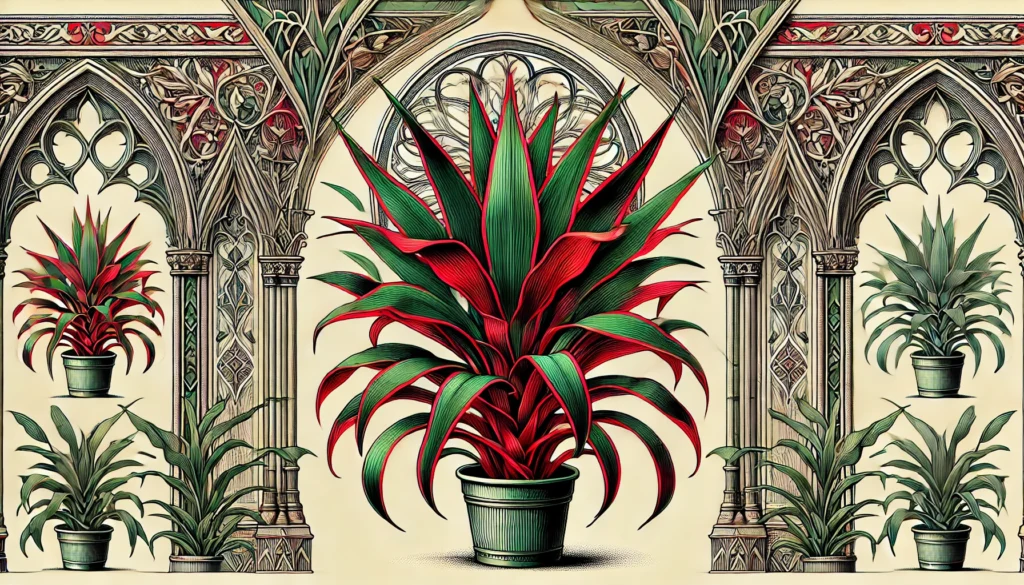

Home » Cat Plants » How the Red-Marginated Dracaena Plant is a Toxic Hazard for Cats?

The Red-Marginated Dracaena (Dracaena marginata), also known as the Madagascar Dragon Tree, is a popular houseplant that can pose a toxic threat to cats if ingested. While not highly toxic, this plant contains saponins which can cause mild to moderate symptoms in felines.
Commonly found in homes and offices, the Red-Marginated Dracaena is often chosen for its attractive, sword-shaped leaves with red edges.
Ingestion may cause mild gastrointestinal upset, but is generally not life-threatening.
Ingestion can result in mild symptoms like vomiting, diarrhea, or drooling. Rarely fatal but may require veterinary care.
Eating these plants can lead to more pronounced symptoms like abdominal pain, lethargy, or difficulty breathing. Veterinary intervention may be necessary.
Ingesting even small amounts can cause severe symptoms like organ damage, seizures, or cardiac failure without rapid treatment.
All parts of these plants are extremely poisonous to cats and can quickly lead to death, even with immediate veterinary care.
** Please note: Please note that toxicity level can vary based on the amount ingested and the specific cat. It's always best to keep these plants completely inaccessible to cats and seek immediate veterinary care or call the poison hotline if you suspect your cat has ingested any part of a toxic plant.
If your cat has ingested any part of a Red-Marginated Dracaena plant, they may experience the following symptoms:
These symptoms typically occur within a few hours of ingestion and can last for several days, depending on the amount consumed and your cat’s individual sensitivity.
If you suspect your cat has eaten part of a Red-Marginated Dracaena, it’s crucial to seek veterinary care promptly. Your vet will likely follow these steps to diagnose and treat the issue:

A: Yes, the Red-Marginated Dracaena plant, also known as Dracaena marginata, is toxic to cats. It contains saponins, which can cause vomiting, drooling, and lethargy if ingested.
A: If a cat eats Dracaena marginata, symptoms like vomiting, loss of appetite, and excessive drooling can appear. In severe cases, cats may experience weakness or dilated pupils due to the plant’s toxic saponins.
A: While Dracaena poisoning is rarely fatal, it can cause significant discomfort and health issues in cats. Prompt veterinary care is recommended to manage the symptoms and prevent further complications.
A: To safeguard your cat, avoid keeping toxic plants such as the Red-Marginated Dracaena within their reach. Choose pet-safe alternatives like spider plants or bamboo palms for your home.
A: If your cat ingests Dracaena marginata, contact your vet immediately. Keep an eye out for symptoms like vomiting, drooling, or lethargy, and provide medical care promptly.
A: Most Dracaena species, including the Red-Marginated Dracaena, are harmful to both cats and dogs due to their saponin content. It’s important to ensure these plants are kept out of your pet’s environment.
Native to Madagascar, the Red-Marginated Dracaena has been a beloved houseplant for decades due to its striking appearance and low-maintenance care requirements. In its natural habitat, this species can grow up to 20 feet tall as a shrub or small tree. However, when grown indoors, it typically reaches heights of 6 feet or more unless pruned shorter.
The plant’s narrow, sword-shaped leaves are its most distinctive feature, with their deep green color and thin, red margins. As the plant ages, lower leaves fall off, revealing the slender, gray stems marked with diamond-shaped leaf scars. While the Red-Marginated Dracaena rarely flowers or produces berries indoors, in its native environment, it can produce fragrant, tiny white flowers in spring, followed by spherical yellow-orange berries.
Please note: The information shared in this post is for informational purposes only and should not be considered as veterinary medical advice.
🐾 A hilarious or heart-melting cat video
🐾 Our latest paws-on review of a cool cat toy